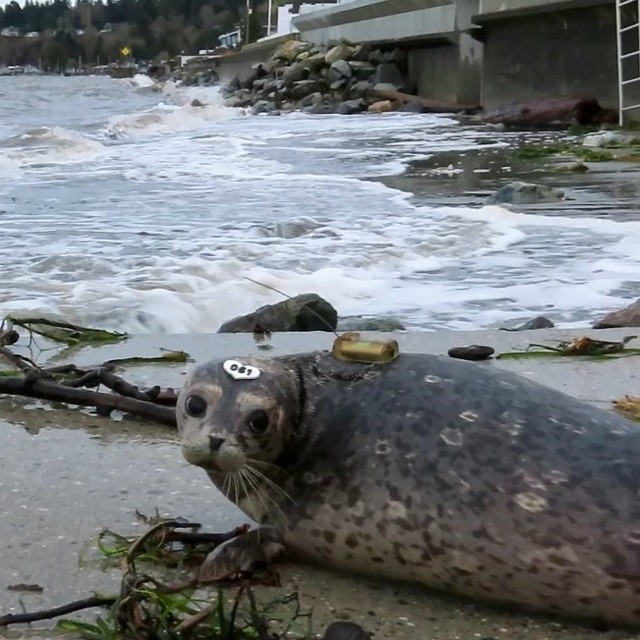- The journey of Biscuits, the rescued harbor seal, from rescue and rehabilitation to her release back into the wild.
- The role of wildlife rehabilitation in preserving species and ensuring animal welfare.
- The technological tools, such as GPS trackers, used in monitoring and studying released wildlife.
- The importance of research and public awareness in conservation efforts.
- Insights into the natural history of harbor seals and their ecological significance.
The captivating story of Biscuits, a rescued harbor seal, has captured the imagination of many, both online and offline. Her journey from being stranded and vulnerable to becoming an emblem of successful wildlife rehabilitation is a valuable case study in the practice of wildlife conservation. Biscuits’ release back into her natural habitat, equipped with a modern tracking device, provides an opportunity to explore several facets of animal rescue, from rehabilitation to the critical need for ongoing monitoring once animals are returned to the wild.
To begin, it’s important to understand the circumstances surrounding Biscuits’ rescue. Like many marine animals, harbor seals can face numerous challenges in the wild that may render them incapable of surviving without human intervention. These can range from environmental hazards such as oil spills and fishing nets to disease and malnutrition. In Biscuits’ case, her rescue was prompted by reports of her appearing emaciated and unable to fend for herself. Her journey to recovery was largely due to the skilled efforts of marine biologists and volunteers dedicated to rehabilitating such animals. This often involves consistent medical care, nutritional support, and gradually reintroducing the animal to the skills necessary for survival in the ocean.
Wildlife rehabilitation facilities serve as critical havens for injured or distressed animals. These centers are staffed with experts capable of performing necessary medical procedures and providing care until the animals are strong enough to be released. For harbor seals like Biscuits, rehabilitation might include monitored swimming sessions to rebuild muscle strength and diet plans to ensure they reach a healthy weight. It’s a labor-intensive process that underscores the broader goals of wildlife conservation: to restore individual animals to health and maintain the natural populations of species threatened by human activity.
An integral aspect of Biscuits’ release involved equipping her with a GPS tracker. This small, non-invasive device adheres to the seal’s back and transmits her movements to researchers in real-time. This technology marks a significant advancement in wildlife monitoring, enabling scientists to gather data on migration patterns, habitat utilization, and social behaviors that would otherwise be difficult to obtain. By tracking Biscuits online, not only do researchers gain insights into her post-release adaptation and health, but the public can engage with her journey, fostering a greater understanding and appreciation of marine life.
Monitoring animals like Biscuits allows conservationists to evaluate the success of rehabilitation efforts effectively. Data collected can inform future rescue and release protocols, highlighting what strategies work best and what areas might need improvement. Furthermore, by making this information public, organizations can educate others on the importance of preserving natural habitats, the threats these animals face, and how people can contribute to conservation efforts. This transparency is crucial for raising awareness and inspiring action from individuals who may feel disconnected from distant conservation issues.
Harbor seals like Biscuits are ecologically important marine mammals, playing diverse roles in their aquatic ecosystems. As part of the pinniped family, they are semi-aquatic, often found along coastal waters, bays, and estuaries. They feed primarily on fish and crustaceans, thus maintaining the balance within their food web. Harbor seals also serve as indicators of ocean health; fluctuations in their populations can hint at broader environmental changes or problems, such as pollution or overfishing. Understanding the biology and ecology of harbor seals can help highlight the direct and indirect benefits of conservation work focused on these creatures.
Research and public engagement are cornerstones of effective conservation strategies. In Biscuits’ case, her story serves as an emotional connection to the wider goals of ecological preservation. By tracking her movements and understanding her role in the environment, both scientists and the general public have the opportunity to bear witness to the tangible outcomes of conservation efforts. As Biscuits continues her journey through the oceans, she carries with her the hopes and aspirations of those who worked to save her and countless other seals like her.
In summary, the tale of Biscuits, the rescued harbor seal and now an internet sensation, is not merely a captivating story but a powerful educational tool. It underscores the dedication of wildlife rescuers, the marvel of modern technology in conservation, and the vital role public awareness plays in ensuring the survival of our planet’s diverse species. Her release back into the wild was just one chapter in the ongoing narrative of wildlife conservation. Her progress, tracked online, can inspire more to care for and protect the natural world.
*****
Source Description
Remember rescued harbour seal and internet sensation Biscuits? She was released back into the wild last month! Notice the object on her back? It’s a tracker! You can track Biscuits online here and she where she’s been – just click the link in our bio!


